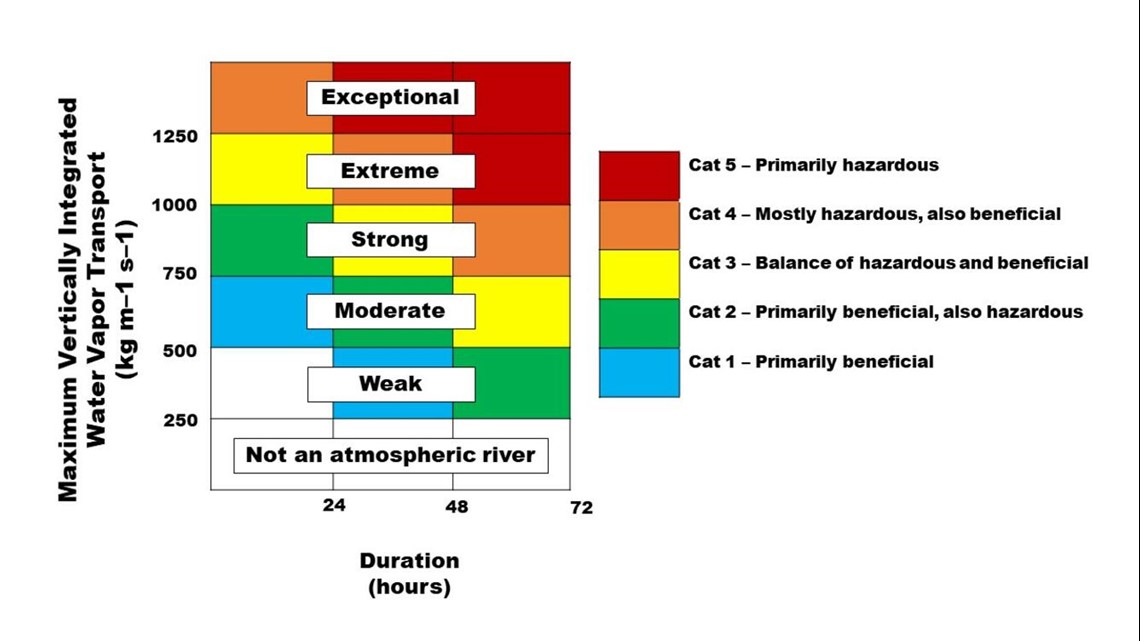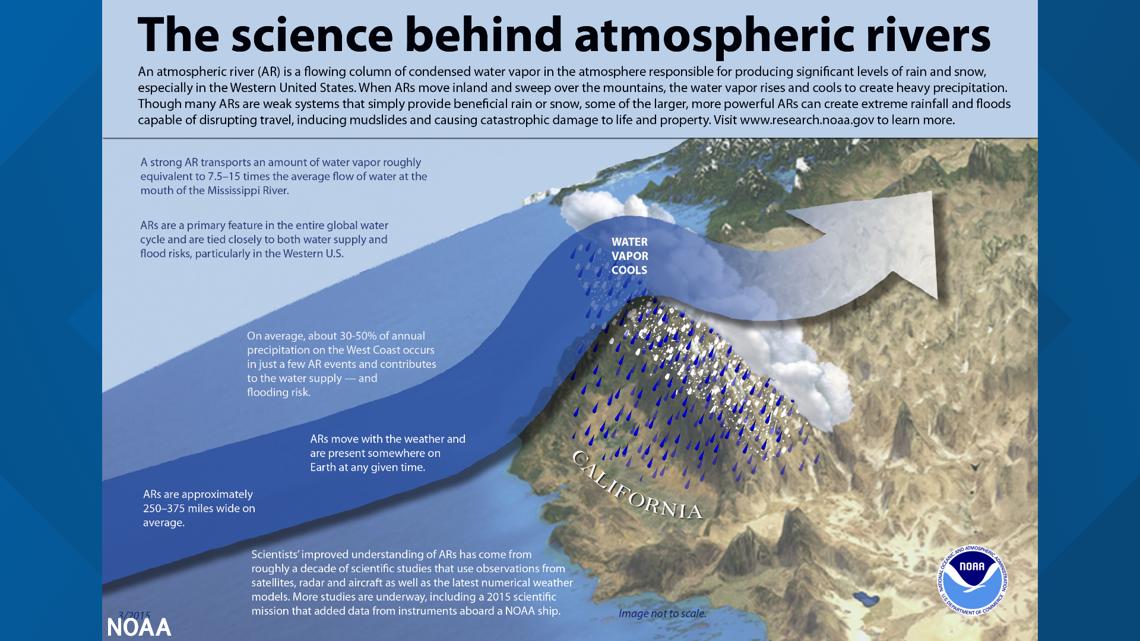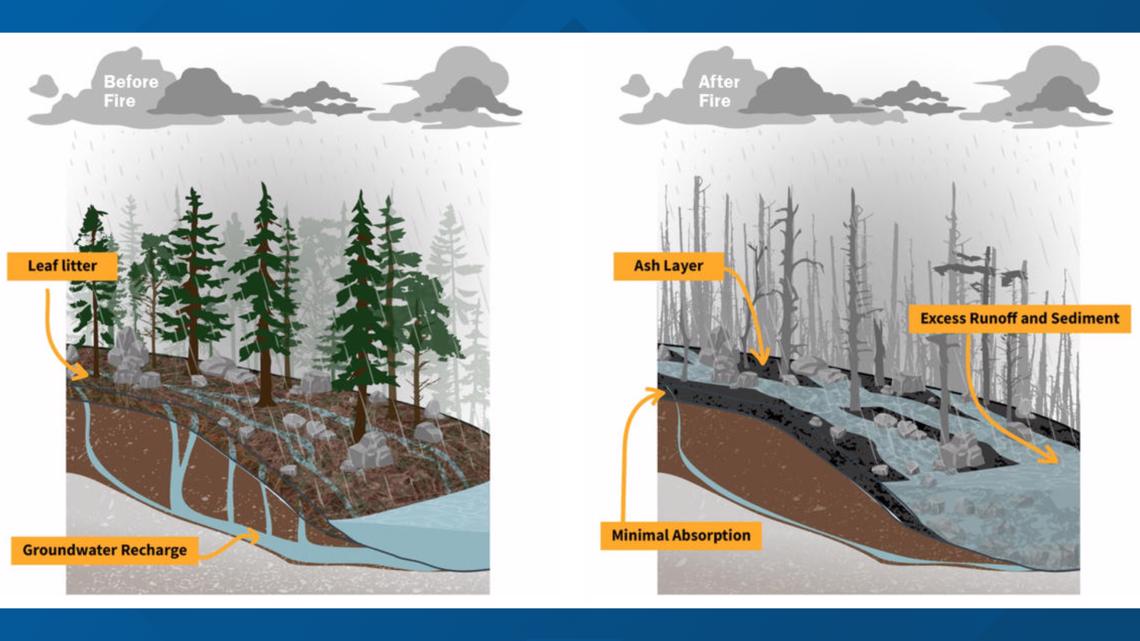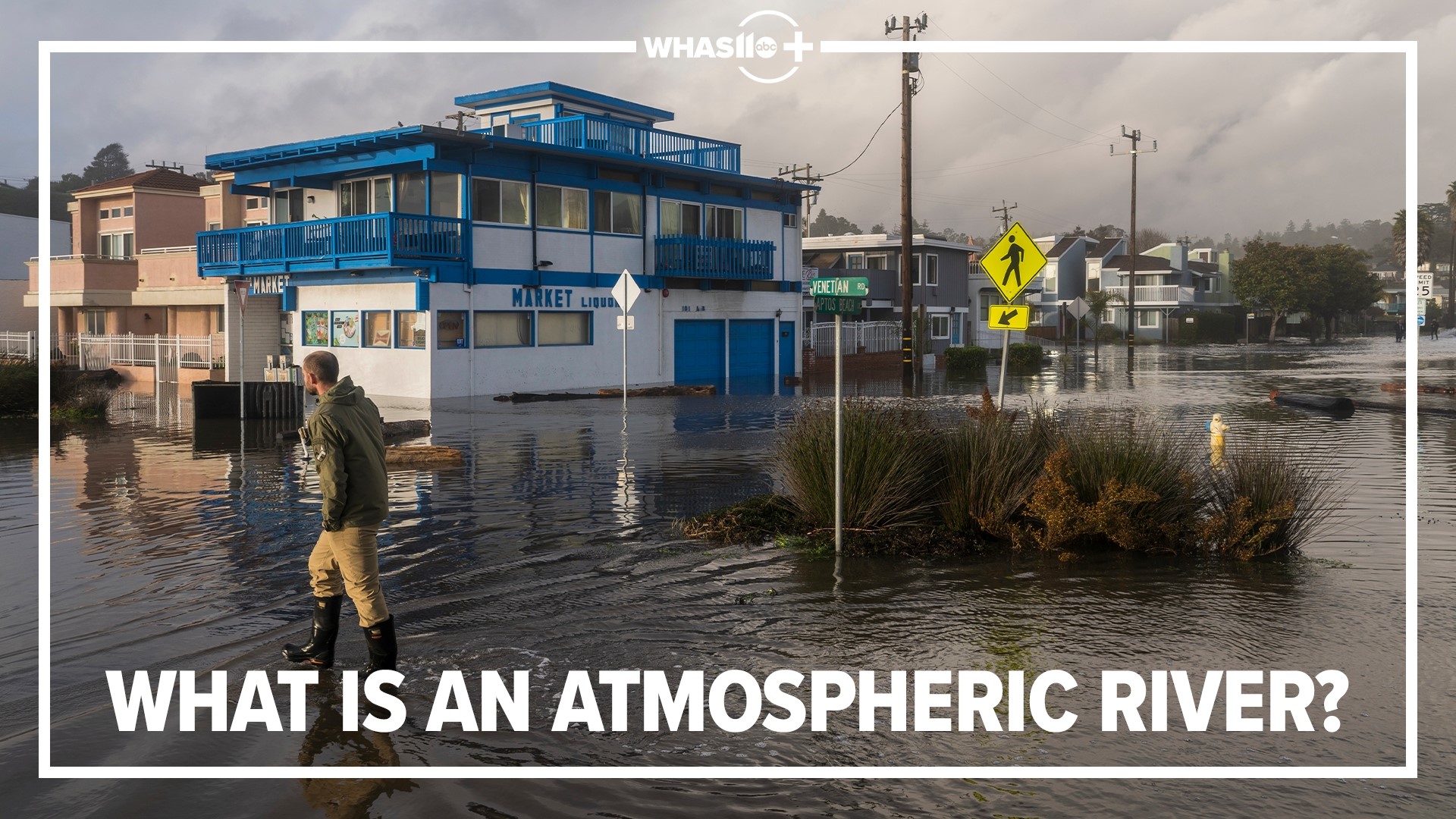LOUISVILLE, Ky. — Tremendous rainfall has been plaguing the west coast, particularly California.
The waves of heavy rain are being caused by the latest meteorological term to take over headlines: atmospheric rivers.
California and the western United States has been enduring exceptional drought conditions for several years, so all of this sounds like it would be welcome, and while it is, it also isn’t.
Here's why.
What is an atmospheric river?
To be clear, it’s not an actual floating river in the sky.
Instead, atmospheric rivers (also known as AR) are relatively narrow (by atmospheric standards) streams of water vapor that can carry twice as much water as flows through Amazon River, according to the American Meteorological Society.
They often originate from tropical regions – for the western United States, that means from the tropical Pacific. It’s sometimes referred to as "the Pineapple Express" since the source of the moisture is frequently found near Hawai’i.
These aren’t rare phenomena, but the impacts can be quite dramatic once the river reaches shore. Only in the past several years has a scale been developed to classify the intensity of atmospheric rivers and their impacts.
This is like the Enhanced Fujita scale for tornadoes, and the Saffir-Simpson wind scale for hurricanes.


The scale is a bit more complicated than what’s used for tornadoes and hurricanes, but can be summed up as: weaker atmospheric rivers are primarily beneficial, while exceptionally strong atmospheric rivers are primarily hazardous.
Duration plays a role too: a longer event can result in more rainfall (or snowfall in mountains), but whether it’s primarily beneficial or hazardous depends on its intensity.
Formation of atmospheric rivers
So how do these powerful, wandering streams of moisture develop? It all starts in the tropics.
Strong sunlight helps evaporate water into the lower atmosphere only about one mile above the surface. From there, global wind patterns and other storm systems can funnel this moisture into a channel that then flows northward in the northern hemisphere.
It’s not until that river reaches land that it’s true power can realized, especially in mountainous areas. When the moisture from the river moves ashore and is forced up the side of mountains, it eventually condenses, forms clouds, and can then produce torrential amounts of rain or snow.
Global water cycle and other impacts
Atmospheric rivers are extremely important parts of the global water cycle. A 1998 study found that AR are responsible for almost the entirety of water vapor transport in the middle latitudes (where we live), but only minimally longitudinally. In other words, they transport most of the moisture going around the globe east/west, but not so much north/south.


Another study found areas that are most affected by AR are up to 80% more likely to see floods while the absence of one may increase the potential for a drought event up to 90%.
Interestingly, locations most likely to see the impacts of (or lack thereof) atmospheric rivers are westerly coastal regions on the planet (including the western United States, western Europe, and North Africa), as well as other locations like New Zealand, but less frequently for areas like the Middle East.
Just because coastal areas see the greatest impact doesn’t mean inland areas can’t either. “Chunks” of atmospheric river energy can break off and move inland bringing rain or enhancing moisture in other storms.
Droughts
For drought-stricken areas like California, atmospheric rivers can be a blessing and a curse.
Although they can help alleviate drought conditions by making up for a rainfall deficit, they can also result in catastrophic flooding, landslides, and debris flows.
Paradoxically, reservoirs and lakes can remain low even after strong AR events. This is partly because of a lack of vegetation after wildfires.
As NOAA explains, severe wildfires kill vegetation that would otherwise help keep soil compact and in place. Without vegetation soil can become loose. When a heavy rain event (not necessarily an AR) comes around, water can flow over the top of the burn scar and cause flash flooding.


Since recently burned areas of forest aren’t as absorbent, much less water is being absorbed into the ground which is what’s needed for ground water supply and to help some lakes re-fill.
Even if this isn’t the case somewhere, some of California’s lakes are so depleted that the California Department of Water Resources says it may take years for water storage to fully recover.
Make it easy to keep up-to-date with more stories like this. Download the WHAS11 News app now. For Apple or Android users.
Have a news tip? Email assign@whas11.com, visit our Facebook page or Twitter feed.

